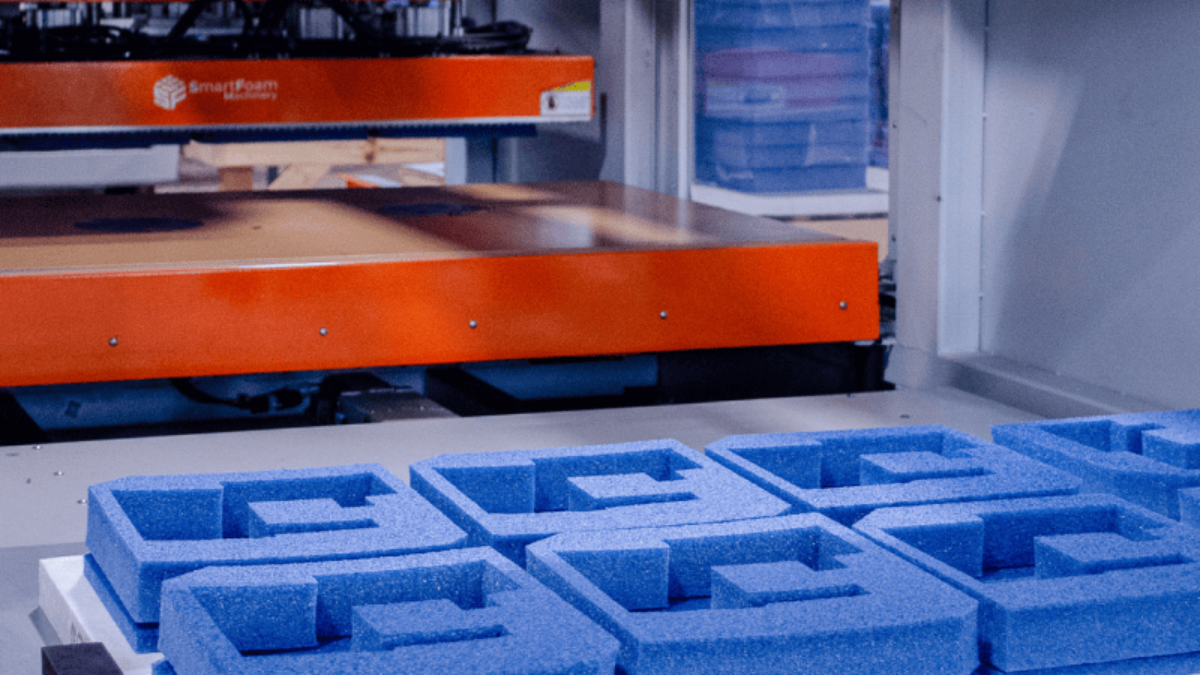When working with applications where chemical exposure is expected, including environments where foam may encounter oils, acids, solvents, and other aggressive substances, choosing the right foam can mean the difference between long-lasting performance and premature failure.
The Importance of Chemical Resistance in Foam
Chemical resistance refers to a material’s ability to withstand degradation when exposed to specific chemicals. Not all foams are created equal when it comes to chemical resistance. The molecular structure and density of a foam can significantly impact how well it resists chemical degradation.
Generally, higher-density foams tend to have better chemical resistance because they have more tightly packed cellular structures, which provide fewer pathways for chemicals to penetrate and cause damage. Higher-density foams are less porous, making them more resistant to absorbing chemicals. This is particularly important in environments where exposure to harsh substances is frequent, as lower-density foams can break down more easily, leading to loss of mechanical properties, brittleness, or even complete disintegration.
Applications Where Chemical Resistance is Essential
There are many industrial and commercial applications where foam is exposed to aggressive chemicals.
- Automotive and Transportation: foams used in seals, gaskets, and padding within vehicles are often exposed to fuel, oils, and hydraulic fluids. Poor chemical resistance in these environments can lead to the degradation of seals and cushions, causing leaks and system failures.
- Industrial Seals and Gaskets: in manufacturing plants and chemical processing facilities, foams are used in seals and gaskets that are regularly exposed to acids, bases, and solvents. Without sufficient chemical resistance, these foams can fail, leading to leaks, contamination, or equipment damage.
- Medical Devices and Equipment: certain medical applications require foams that can resist sterilization chemicals, bodily fluids, and other damaging substances. Foams that degrade under chemical exposure could compromise the hygiene and safety of the equipment.
- HVAC Systems: in HVAC applications, foam seals and gaskets are often exposed to refrigerants and cleaning solvents. Chemical resistance ensures that these components maintain their integrity over time.
Chemicals That Foams Must Resist and the Best Foams to Use
When choosing foam for chemically aggressive environments, consider the specific chemicals it will be exposed to. Here’s a look at some common chemicals and the best types of foam to use in each application:
Oils and Fuels
Chemicals include motor oil, diesel fuel, gasoline, and lubricants.
Best Foam Choices:
- EPP (Expanded Polypropylene) Foam: EPP is a closed-cell foam that offers moderate resistance to oils and is often used in protective cases and automotive components where oil exposure is frequent.
- Neoprene Foam: known for its excellent resistance to oils, fuels, and solvents, neoprene is commonly used in automotive and industrial applications. It remains stable and retains its properties even when exposed to harsh chemicals.
- EPDM Foam: EPDM also offers good resistance to oils and is often used in seals and gaskets for automotive and HVAC applications.
Acids and Bases
Chemicals include sulfuric acid, hydrochloric acid, and sodium hydroxide.
Best Foam Choices:
- EPE (Expanded Polyethylene) Foam: EPE is an option with good resistance to mild acids and bases. Its lightweight, closed-cell structure makes it suitable for packaging applications where chemical exposure is a concern.
- Silicone Foam: silicone is highly resistant to both acidic and basic environments, making it ideal for use in chemical processing plants and laboratory equipment.
Solvents and Alcohols
Chemicals include ethanol, isopropyl alcohol, acetone, methylene chloride.
Best Foam Choices:
- Polyethylene (PE) Foam: PE foam, especially in its cross-linked form, provides excellent resistance to a wide range of solvents and alcohols. It is often used in protective packaging, seals, and insulation.
- PVC/Nitrile Foam: this foam blend offers resistance to many solvents and alcohols, making it a good choice for gasketing and sealing applications.
Cleaning Agents and Disinfectants
Chemicals include bleach, hydrogen peroxide, and ammonium compounds.
Best Foam Choices:
- Polyurethane Foam: while polyurethane is more susceptible to hydrolysis, certain formulations provide good resistance to disinfectants and cleaning agents, making them suitable for medical applications.
- Silicone Foam: silicone is ideal for environments requiring frequent cleaning and disinfection, especially in healthcare and food processing settings.
- EPE Foam: EPE foam has moderate resistance to various cleaning agents, often used in protective packaging for sensitive equipment that may be exposed to disinfectants.
Refrigerants and Coolants
Chemicals include freon, glycol, and ammonia-based coolants.
Best Foam Choices:
- EPP Foam: EPP is commonly used in automotive components where refrigerants and coolants are present, providing durability and resistance to these chemicals.
- EPDM Foam: EPDM is well-suited for use in HVAC and refrigeration systems due to its resistance to coolants and refrigerants.
- Neoprene Foam: neoprene’s chemical stability under exposure to refrigerants makes it a reliable choice for seals and gaskets in cooling systems.
We Stock Many Classifications of Foam that are Resistant to a Wide Variety of Chemicals. Looking for a Specific Foam? Get in Touch with us Today!


